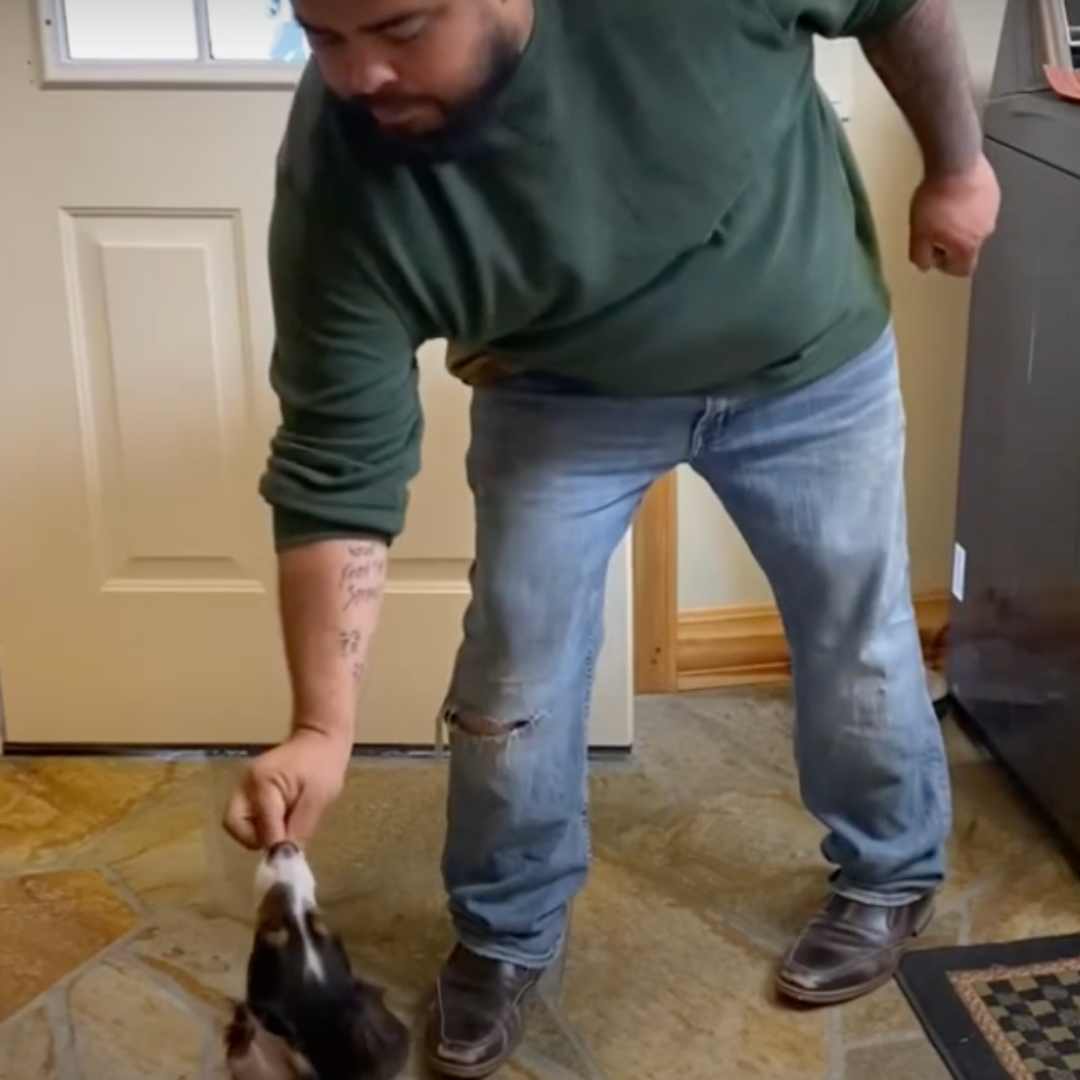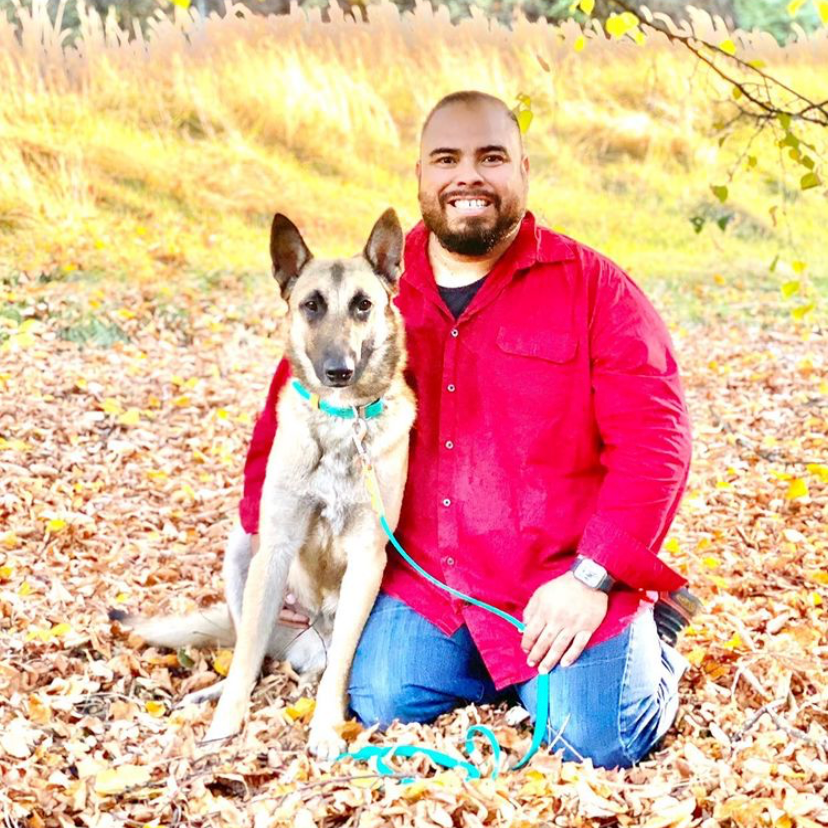Our dogs' hearing is vastly sharper than ours and many dogs are also quick to associate a sound with what happens whenever they hear it.
The result can be automatic emotional responses - some not so great, like when your dog feels anxious, fearful, or overexcited.
That's how something like your front or back doorbell or alarm and the sounds that go with it can take on big-deal emotional status with your dog. Your dog's behavior in those moments of hearing the sound is simply the outward expression of your dog's emotions.
Why you might want to change your dog's emotions about noises
If your dog has a negative response to a doorbell or alarm, showing signs of stress as even somewhat-fearful dogs can, you certainly don't want your dog to go through the anxiety and distress triggered by the door multiple times per day.
On the flip side, other dogs can have the opposite reaction. If your dog is not a fearful dog but is beyond overjoyed at the thought of an outdoor romp or walk at the sound of the beep or bell, you want to avoid your dog rushing the door and possibly bursting outside. That's not only impolite behavior but can be downright dangerous.
Your Dog's Plan
Stop! Don't read this long article. Instead, get everything you need to know, including all advice on Noise Sensitivity, in a customizable step-by-step plan for your dog created by our community of certified trainers and nutritionists.
Changing how your dog feels about sounds
What we're doing in this training exercise is working with your dog to change the way your pup feels about the sound of the doorbell or alarm and what's happening around the door by creating positive associations.
Let's jump into using positive reinforcement to desensitize your dog to the sound of the doorbell or alarm...
How to teach your dog the doorbell or alarm equals good things
In this training activity with your dog, you're desensitizing and replacing the meaning of the doorbell or alarm in your dog's mind, creating positive associations with the idea of treats and calm. Your dog learns the doorbell or alarm is a non-event and begins to remain calm and at ease naturally. Here's how it works step by step:
Try this
1) Start with your dog in a sit, on a rug we placed by the door.
This rug or mat will be the place we want your dog to be when you get ready to exit when leaving the house. You'll want to have plenty of high value treats handy and a few treats already in hand or an easy access pouch or pocket so you can treat the minute your dog hears the doorbell or alarm.
Pro tip: you'll notice in the accompanying video below that I also use a clicker... keeping it in my hand so I can click immediately after the doorbell or alarm beeps and Maggie (the dog) notices the sound.
Why does that matter? Most humans can click faster than they can deliver a treat, so it helps to mark the moment with a click that predicts a treat is coming right behind it. Dogs associate their rewards with whatever happened immediately before it. So if you want to signal the reward more quickly and smoothly, a clicker helps.
Noise Sensitivity
Interested in Noise Sensitivity? Follow topics you're interested in to customize your dog’s step-by-step plan so it's most helpful and tailored to your dog when you're ready to get started.
2) Open the door, let your dog hear the sound, click and treat.
Pro tip: if your dog reacts so strongly to the sound that it's hard to get any focus, proximity to the rug, or bit of calm to make learning possible...
Try lowering the volume of the doorbell or alarm. If you can't lower it, try recording it on your phone, turn off the bell or alarm, and play at a lower, gradual-exposure level as you open the door. Gradually raise the volume as your dog gets more comfortable till you are back to the regular level.
3) Repeat #2 several times...
Repeat till your dog gets comfortable with knowing that whenever he/she hears the beep and stays calmly on the rug, good things happen (treats!).
There are many valuable things going on here, such as waiting at thresholds, door alarm desensitization, and then once your dog is comfortable, doing it all at a distance (which you can see in the video below).
4) Once you get good at it and your dog appears totally comfortable, you can add one of the three D's (distance, distraction, duration).
In this case with Maggie in the video, we added distance and then later some distractions. Adding distance means your dog is not next to you and the door as in the earlier version of this exercise.
You will need a partner to work with you, so someone can open and close the door and someone is in another place in your house with your dog to reward with treats. (It's helpful to see how this works in the video.)
5) As always, reinforce your dog with high-value treats for being calm and staying on the rug when he/she hears the doorbell or alarm.
6) Practice, practice, so your dog's new non-emotional response becomes a habit.
If at any time during the first part or at the second, higher level your dog gets tired, distracted, or needs a break, take one! Or stop for the day and start again tomorrow. In this and all dog training, you always want to watch and listen to your dog and keep it a fun, bonding and learning time for both of you.
Anxiety
Need more advice? Browse all guides in the Anxiety Channel on topics like Understanding Anxiety, Crate Anxiety, Separation Anxiety, and Noise Sensitivity - created by our community of certified experts for you and your dog.
(Side note on Maggie and our work in the video: This was Maggie's first time working with door alarm desensitization, although I had been working with her on other things for about a month so she was used to training and predisposed to know it meant good things.)
You and your dog have just learned an exceptionally versatile skill: counter-conditioning using positive reinforcement.
What that actually means...
Desensitizing by using positive rewards (usually treats, food) is a highly useful, classical conditioning tool for dog parents - especially if your dog tends to have anxieties, noise or otherwise. You can use it to help keep your dog calm in a number of situations dogs react to (you'll often see desensitization and counter conditioning as part of a positive training/behavior modification program for a range of uses).
Enjoy your newfound skill and calm - and most of all, your dog!
Learn how to desensitize your dog to scary noises like doorbells and alarms. Discover techniques to change your dog's emotional responses and associations with these sounds through positive reinforcement.
Choose how you'd like to view this guide's video.

Next up in the Anxiety Channel on Dogly
Now that you know how to desensitize a dog to noises, continue to other guides in the Anxiety Channel to learn more ways to support your dog like how to give your dog a de-stressing massage (especially for anxious dogs) or how to teach your dog to stay calm outside of the house.
Or jump to Separation Anxiety step-by-step guides like how to make coming and going boring and how to set your home environment up for success.
Hop over to the Anxiety Channel if you'd like to ask any of the Dogly Training Advocates who are all certified dog trainers a question in the Community discussion or start any of the step-by-step guides in Noise Sensitivity, Separation Anxiety, or Understanding Anxiety.
And if you ever need more personalized training help, please reach out to work with me here on Dogly!

